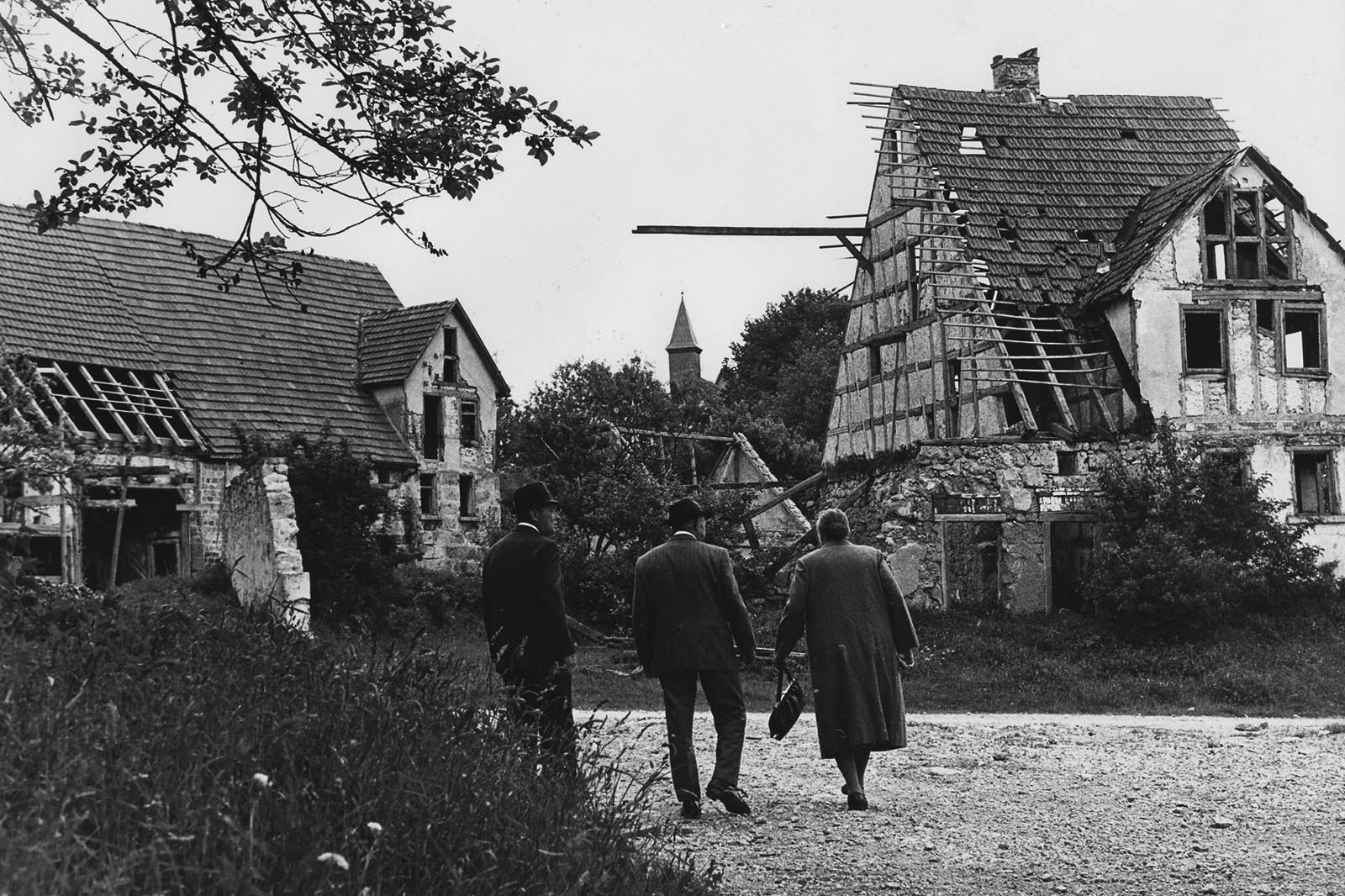Downloads
DOI:
https://doi.org/10.7480/spool.2018.2.3306Keywords:
post-military landscapes, Germany, landscapeAbstract
In Germany, the fall of the Iron Curtain led to the extensive withdrawal of allied troops stationed there, as well as the reduction in number of the German armed forces. This process was accompanied by the repurposing of formerly restricted military terrain in both urban contexts and the countryside. Post-military landscapes are full of traces of former usage and comprise a heritage that ranges from their earlier civilian history to their militarisation, from past to recent conflicts. This paper focuses on the remembered and forgotten narratives of these fascinating sites and relates them to current management policies for the development of former military sites. Two examples show how landscape design can contribute to preserving or even revealing the forgotten political dimensions of post-military landscapes.
How to Cite
Published
License
Copyright (c) 2020 SPOOL

This work is licensed under a Creative Commons Attribution 4.0 International License.

References
Assmann, A. (1999). Erinnerungsräume. Formen und Wandlungen des kulturellen Gedächtnisses. [Commemorative spaces. Forms and changes of cultural memory]. Munich: Verlag C.H. Beck.
Aumann, P. (2015). Rüstung auf dem Prüfstand. Kummersdorf, Peenemünde und die totale Mobilmachung. [Armament on the test stand. Kummersdorf, Peenemünde and total mobilisation]. Berlin: Ch. Links Verlag.
Bonn International Center for Conversion (1996). Conversion survey 1996. Global disarmament, Demilitarization and Demobilization. Oxford: Oxford University Press.
Bundesministerium für Verkehr, Bau und Stadtentwicklung (BMVBS) (ed.) (2013). Praxisratgeber Militärkonversion [Practical guide to military conversion]. Berlin.
Evangelische Kirchengemeinde Lieberose und Land (n.d.). KZ-Nebenlager „Lieberose" [“Lieberose”, concentration-camp satellite. Retrieved from http://www.die-lager-jamlitz.de/KZ-Nebenlager_Lieberose/kz-nebenlager_lieberose.html
Germes-Dohmen, I. (2006). 3 Base Ammunition Depot. Ein britisches Munitionsdepot im niederrheinischen Grenzwald 1948–1996. [3 Base ammunition depot. A British ammunition depot in the Lower Rhine’s border forest 1948–1996] Schriftenreihe des Viersen 47.
Holtkemper, S., Kozel, A., Meyer, G., Niemeyer, N., Prommer, V., Richter, M., Schüler, N., Wagener, K., Wiener, F., & Wussow, F. (2016), Entwurfslabor Kummersdorf. Strategien für eine post-militärische Landschaft. [Kummersdorf design lab. Strategies for a post-military landscape]. Hannover: Leibniz Universität Hannover, Institut für Freiraumentwicklung, Fachgebiet Entwerfen urbaner Landschaften, Prof. Dr. Martin Prominski. Unpublished.
Kalman, M. (1997). Regionale Konversion in Deutschland: Vergleichende Analyse regionaler Politikprozesse zur zivilen Bewältigung des militärischen Strukturwandels. Beiträge zur Konversionsforschung. [Regional conversion in Germany: A comparative analysis of regional political processes relating to the civil management of military structural change]. vol. 6, Münster: Lit Verlag.
Landeszentrale für politische Bildung Bremen (2015). Historische Einführung. Geschichte des Bunker “Valentin” in Bremen-Farge. [Historical introduction. The history of the “Valentin” bunker in Bremen-Farge] Retrieved from https://www.denkort-bunker-valentin.de/geschichte/historische-einfuehrung/beitraege/news/geschichte-des-bunker-valentin-in-bremen-farge.html?tx_news_pi1%5Bcontroller%5D=News&tx_news_pi1%5Baction%5D=detail&cHash=ba33ce650ad2ce28c14f583e5f52f544.
Mählert, U. (2016). Militärische Landschaften. [Military landscapes]. Accessed September 18, 2018: https://www.berlinerkolleg.com/de/blog/militaerische-landschaften.
Nora, P. (1990). Zwischen Geschichte und Gedächtnis. [Between history and memory]. Translated from the French by Wolfgang Kaiser. Berlin: Verlag Klaus Wagenbach.
NRW-Stiftung (n.d.). Gebietsbeschreibung. [Area description]. Retrieved from http://www.nrw-stiftung.de/nafgi/index.php?id=9&area=9.
NRW-Stiftung (n.d.) (a). Heidegebiet Brüggen-Bracht. Wo Moorfrosch und Feldgrille singen. [Brüggen-Bracht heathland. Where moor frog and field cricket sing]. Retrieved from https://www.nrw-stiftung.de/projekte/projekt.php?pid=17.
Pöhlmann, M., Bauermeister, C. & Sommerer, E. (2014) (ed.). Die Heeresversuchsstelle Kummersdorf. Schießplatz – Geheimer Ort – Denkmal. [The Kummersdorf “Heeresversuchsstelle”. Shooting range – secret place – monument]. Kummersdorf: Förderverein Historisch-Technisches Museum Versuchsstelle Kummerdorf e.V. (FMVK e.V.) in Zusammenarbeit mit der Projektgruppe Kummersdorf unter dem Vorsitz des Museumsverbandes des Landes Brandenburg e.V.
Schüler, N. (2016). Voluntourismus. Kummersdorf im Wandel. [Voluntourism. Kummersdorf undergoing change]. In: Holtkemper, S., Kozel, A., Meyer, G., Niemeyer, N., Prommer, V., Richter, M., Schüler, N., Wagener, K., Wiener, F., Wussow, F., Entwurfslabor Kummersdorf. Strategien für eine post-militärische Landschaft. [Kummersdorf design lab. Strategies for a post-military landscape]. Hannover: Leibniz Universität Hannover, Institut für Freiraumentwicklung, Fachgebiet Entwerfen urbaner Landschaften, Prof. Dr. Martin Prominski. Unpublished. 222–257.
Tunbridge, J.E. & Ashworth, G.J. (1996). Dissonant Heritage. The Management of the Past as a Resource in Conflict. Chichester: John Wiley & Sons Ltd.



